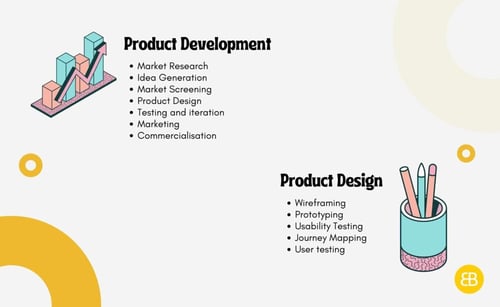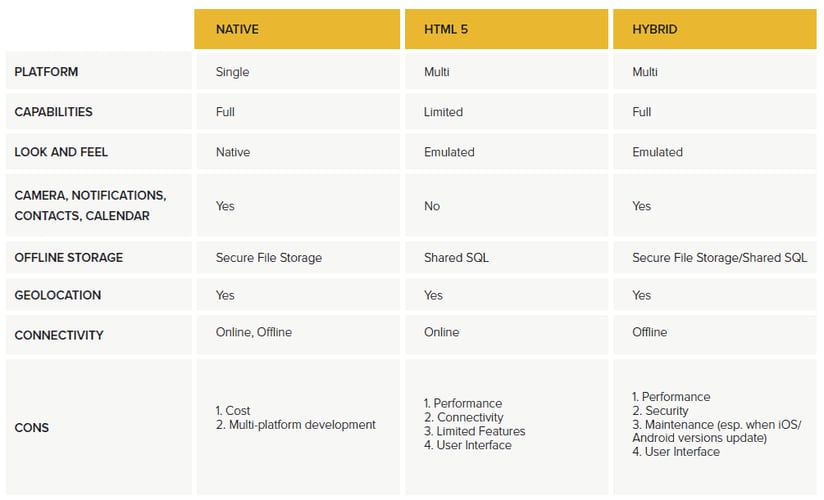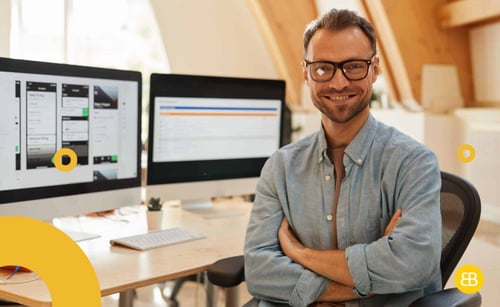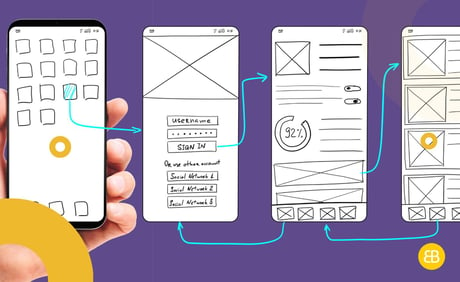Table of Contents
How to design a product successfully in an ever-changing business landscape? What does product design involve and how does it differ from product development? How to build something that stands the test of time?
With the number of smartphone subscriptions worldwide surpassing six billion in 2022, your app or website needs to serve a clear purpose and meet your customers’ expectations to be successful. This is why you might want to design a product that stands out!
Let us guide you through the product design process — in this blog post, we’ll provide some invaluable tips on how to start from scratch and design a unique product that stands out!
What Is Product Design?
Product design is the process of creating products that solve users’ problems or address specific needs in a given market. The key to designing a product that is successful is understanding the end-user customer, the person for whom the product is being created, but also keeping the business objectives in mind.
What does product design involve? For instance, product design includes user experience (UX) design. People often use the terms interchangeably. However, think of it this way: product design can also mean designing user interfaces and the user experience from a business perspective.
What does a product designer do? They often uses empathy mapping to understand the target audience and ensure that the end user’s journey is as smooth as possible. They’re more than visual designers, they have to generate ideas, identify areas of improvement, collect qualitative data, build the user journey map, and build prototypes to further test and optimize before the development phase.
What Is The Difference Between Product Design And Development?
Product design aims to transform an idea into a tangible proof of concept through wireframing, prototyping, usability testing, and much more. Typically, product designers come up with products that are visually appealing, easy to use, and functional for their intended purpose.
On the other hand, product development involves taking the product design and turning it into reality. This process includes not only a lot of market and user research and engineering the product from concept to completion but also marketing and distributing the product.

What Are The Main Stages In The Design Process?
Discovery & Ideation
In the first stage, you need to identify your target audience’s needs and pain points and use this insight to guide design decisions. Then, determine what functionalities your app or website needs to provide to meet its intended purpose.
Make sure you also research apps or websites similar to your concept to gain insight into different features available within similar apps today.
What Are The Objectives of This Phase?
The discovery and ideation phase allows you to:
- Identify the needs, pain points, and desires of your target users;
- Research similar apps to decide on potential features and functionality;
- Define product objectives, user journey mapping, and project goals.
What Is a Common Misconception About This Stage?
It’s a common misconception that creating a digital product is as simple as copy-pasting the code of any other popular app or website that offers similar features and functionality. Sure, you need to follow industry best practices, and it’s okay to get inspiration from your competitors, but you need to design your own product — and that takes time and effort.
In the discovery and ideation phase, there are a few key things you need to consider:
- Following industry best practices can help you create a successful digital product;
- Designing a product is more than just copying the code of other popular apps or; websites
- Learning from competitors can be helpful, but make sure to put your own spin on things.
Research & Planning
Once you have clearly defined goals, you can move on to building your project roadmap. Selecting which platform(s) or operating systems your mobile application should support is key..
Determine a budget and take into consideration design and development costs, as some technologies might be more costly and time-consuming than others.The average mobile app cost in Australia is around 25,000 US dollars (32,000 Australian dollars), but it might cost you a lot more to build, launch, and manage a website or app, depending on the complexity of your project and many other factors.

When you are creating a product, you need to think about how you can make money from it. You need to plan ahead so you know what to include in your MVP (Minimum Viable Product) to make it profitable. During the research and planning, you can also come up with a monetization plan, especially if the digital product you’re planning to build is an app.
Why? Well, consider this: in 2020 alone, the most popular subscription apps in the Apple App Store generated over 10 million U.S. dollars in global revenues! Monetizing your app can bring you high ROI (return on investment) rates. This means adding things to your product that people will pay for.
What Are The Main Goals of This Stage?
- Planning out an app or website that is intuitive and easy to use;
- Come up with a monetisation strategy for your app (or website);
- Select the appropriate platform(s) and/or operating systems.
Prototyping
During this stage, it’s important to gather feedback from potential users and refine the product until it meets their needs. A high-fidelity prototype allows you to get a clear image of the final user interface, enabling you to refine the design before moving on to development and launch.
What Are The Goals of This Stage?
Put simply, building your prototype enables you to:
- Avoid costly changes down the line
- Get a sneak peek of the final product
- Reduce workload, saving time and money
What Is a Common Prototyping Misconception?
The main misconception of this phase is the optionality of the user feedback. We know through experience that gathering and following through with user feedback helps create successful products. User feedback should be incorporated at every step of the process to ensure success and understand which features are most desired by consumers and more likely to help them achieve the desired outcome.
Testing & Optimising
Before sending the final product design to the development team, you need to test out the prototype to catch any technical and usability issues before they cause major issues further down the line. Besides, these issues might negatively impact the user experience, leaving users frustrated and further damaging the brand’s reputation.
UX designers look at how users interact with the prototype and adjust their strategy accordingly. Usability testing with key user groups can provide valuable insight into the product’s functionality and uncover any bugs or vulnerabilities but also give you insight into future improvement opportunities such as app store optimisation (ASO).
What Are The Objectives of This Stage?
- Catching any technical errors or issues before moving on to the development stage;
- Testing performance, usability, and app or website content (i.e., visual content and copy);
- Planning for future improvements and fixes, including app store optimisation.

3 Tips For Making A Digital Product Stand Out
1. Use Conversion-Oriented Content
In a world where we are crowded with thousands of marketing messages every day, making your digital product stand out is a must. To achieve that, create an experience that brings real value to your users with a conversion-oriented user interface, from visual content to copywriting.
If users can’t figure out how to use your product or the message you’re trying to convey isn’t clear, they will likely turn to your competition.
What should you focus on?
- Creating a unique user experience that stands out from the rest;
- Tailoring your product to meet the needs of your target audience;
- Focusing on both functionality and visual elements;
- Making sure that the messaging resonates with your target audience.
2. Keep It Simple
Create a clean and straightforward design, and make sure that the user experience is frictionless and action-oriented. Don’t try to reinvent the wheel — learn from big players in your industry that have already invested resources into research and development for their app or website.
In terms of information architecture, you should organize, structure, and label content in an effective and sustainable way that makes the product intuitive and accessible to a large audience.
Here’s what you need to keep in mind when designing your digital product:
- Keep the design clean;
- Make it simple and easy to use;
- Follow design best practices.
3. Focus On The Customer
At the end of the day, your digital product needs to be user-centric. Think about your customers and what they need. Ask yourself: ”How can our product help them?” Keep the end-user in mind at all times as you develop your product.
- Make the user experience a priority when designing your product
- Use available data on users’ preferences to create customized content
- Use personalized content to increase user engagement

Bottom Line
How to design a product from scratch? As we’ve discussed above, the process requires a lot of research and hard work — but it is incredibly rewarding!
With technology advancing rapidly each year, now is the perfect time to get started on making your vision come to life, and EB Pearls team is here to help you:
- Provide the research you need to ensure your product has a competitive edge;
- Turn your product concept for a mobile app or website into a reality;
- Design digital apps and websites that are both engaging and functional.
Contact our experts today to get started with your project!

Tiffany brings creativity, adapts quickly to new tools, and leads atomic design principles to enhance UI/UX efficiency.
Read more Articles by this Author
